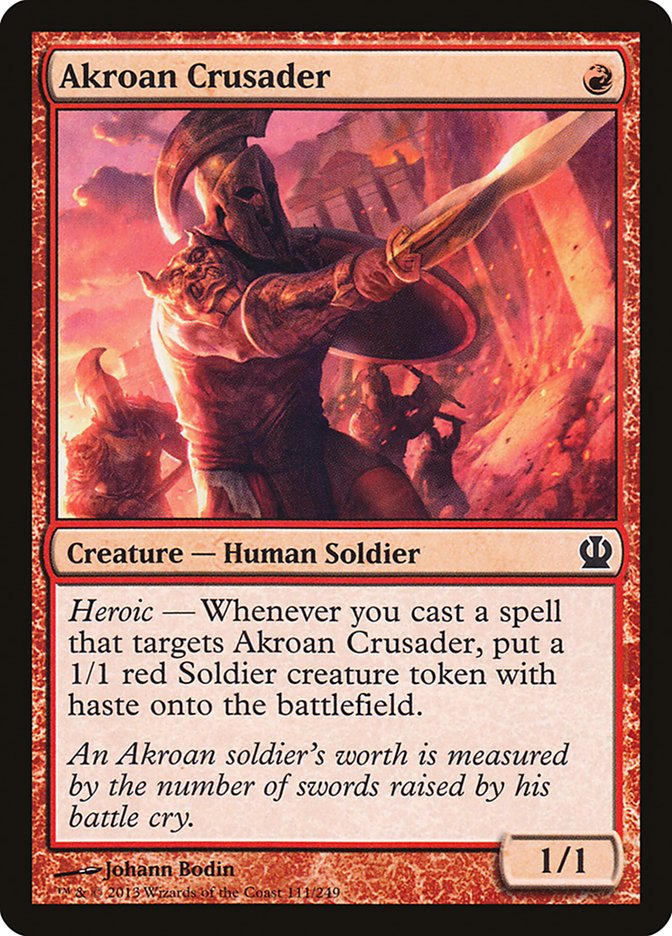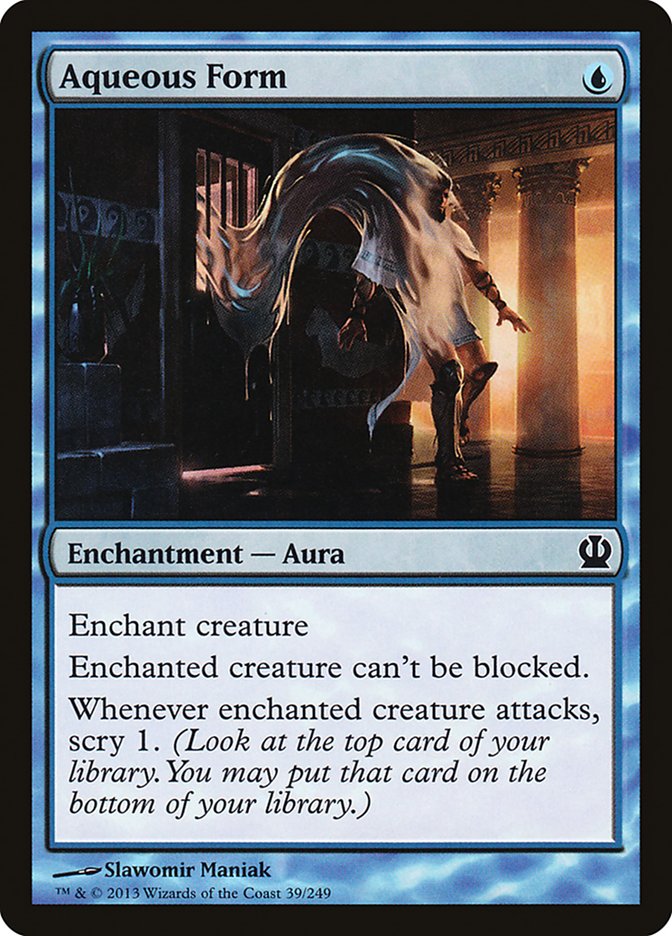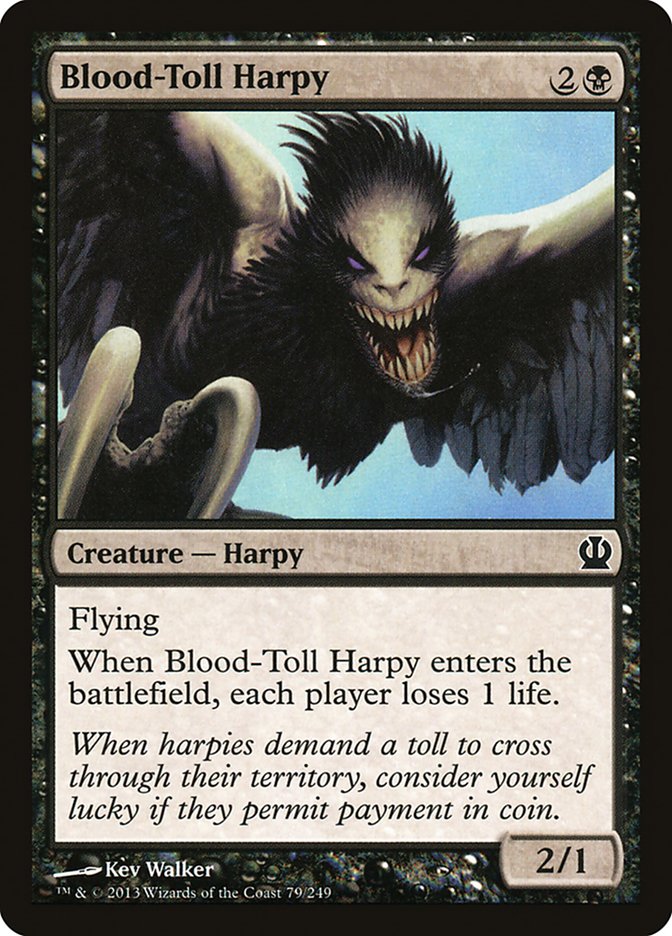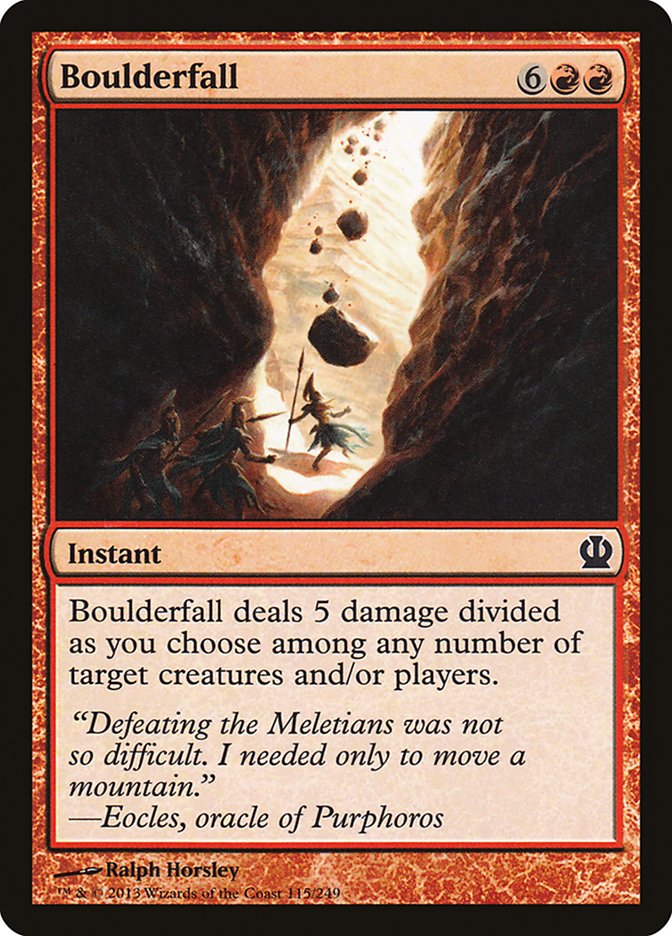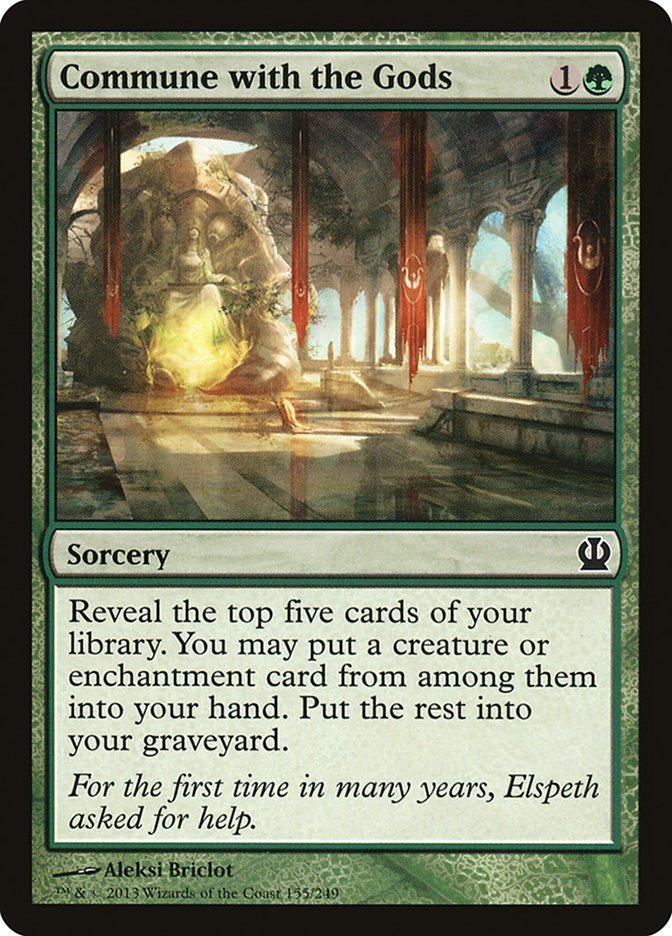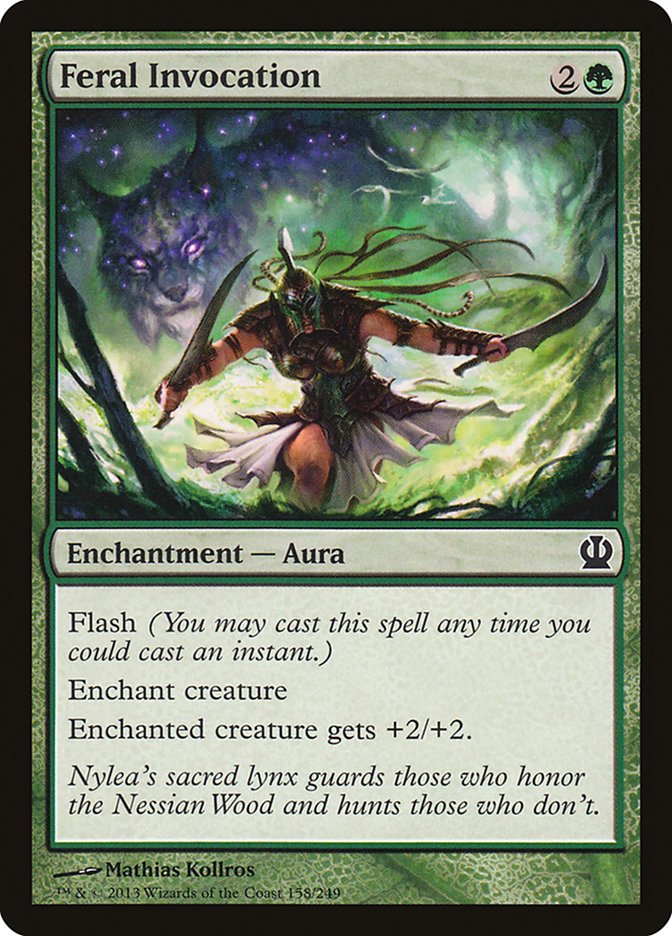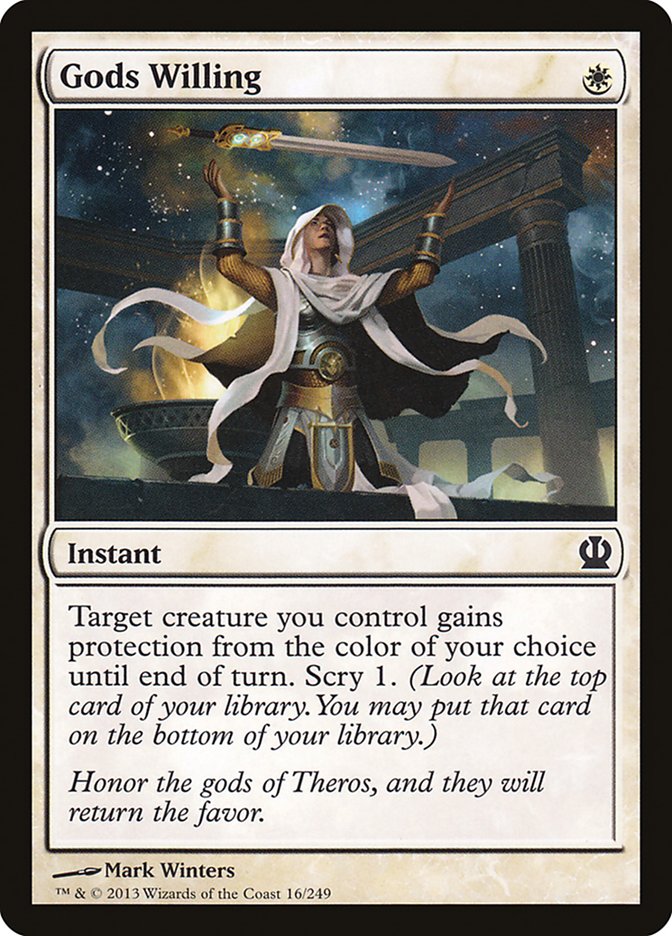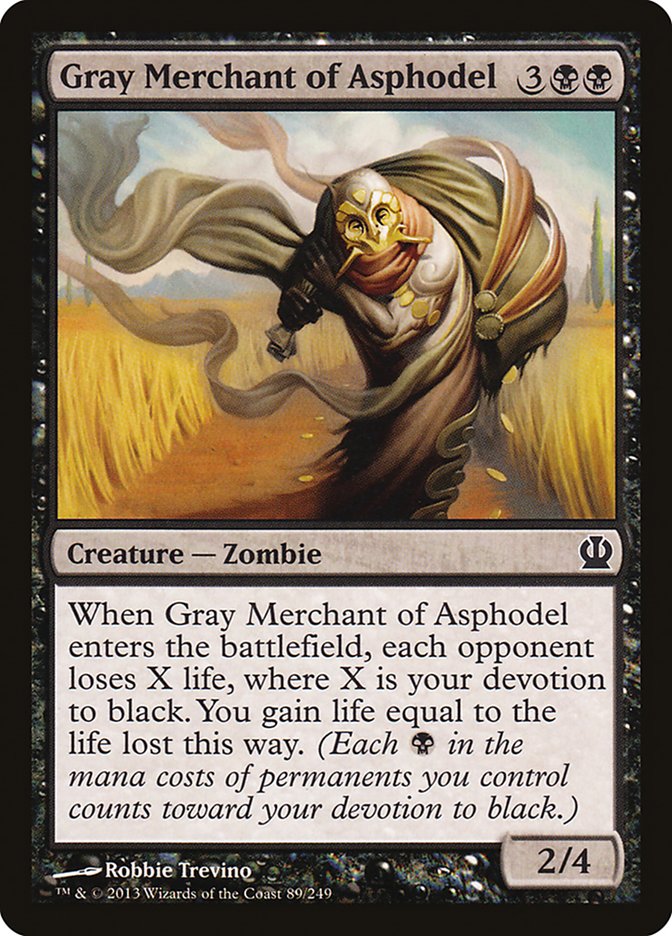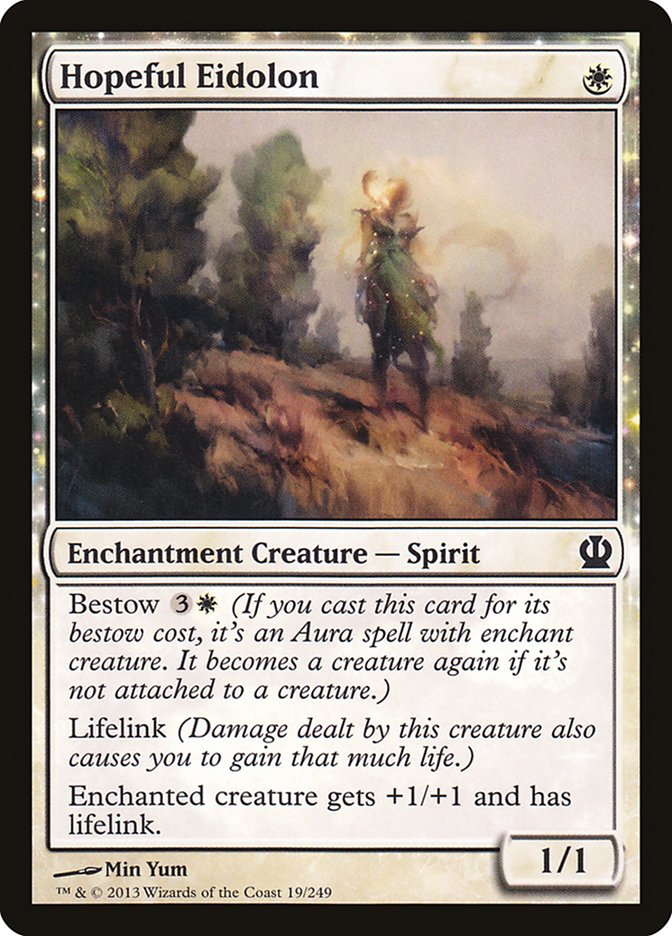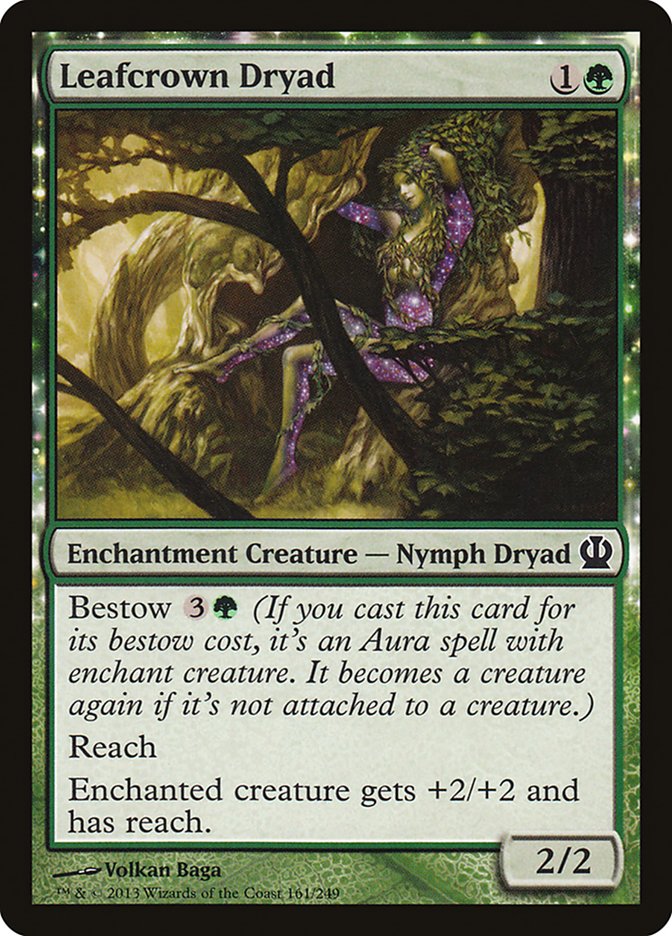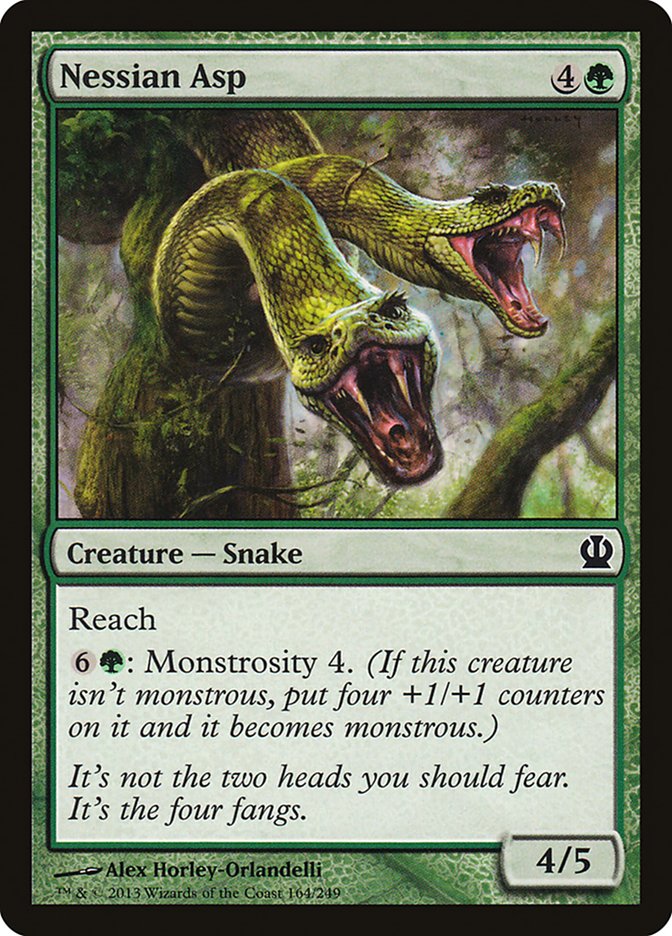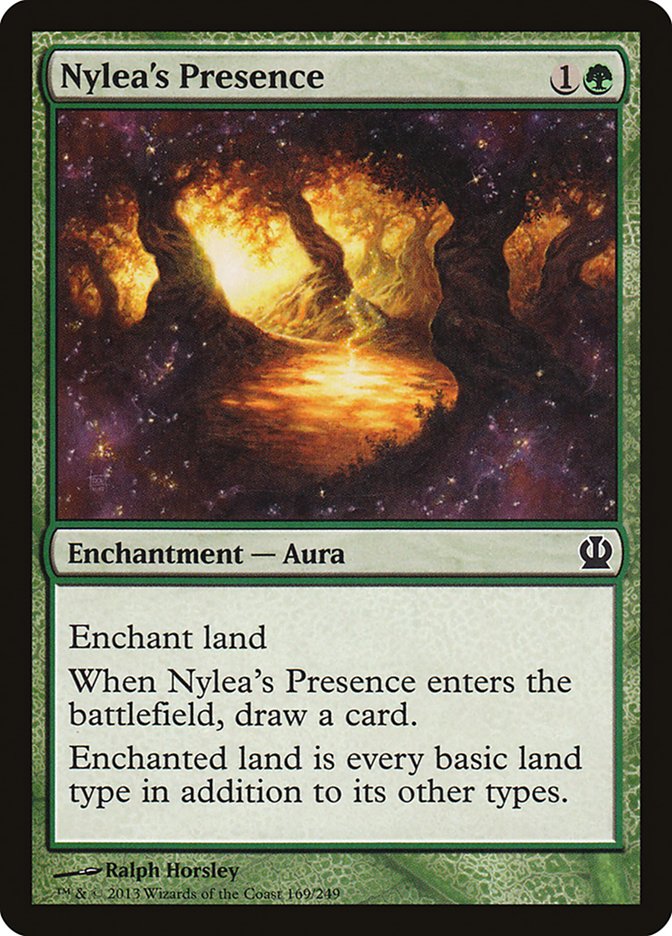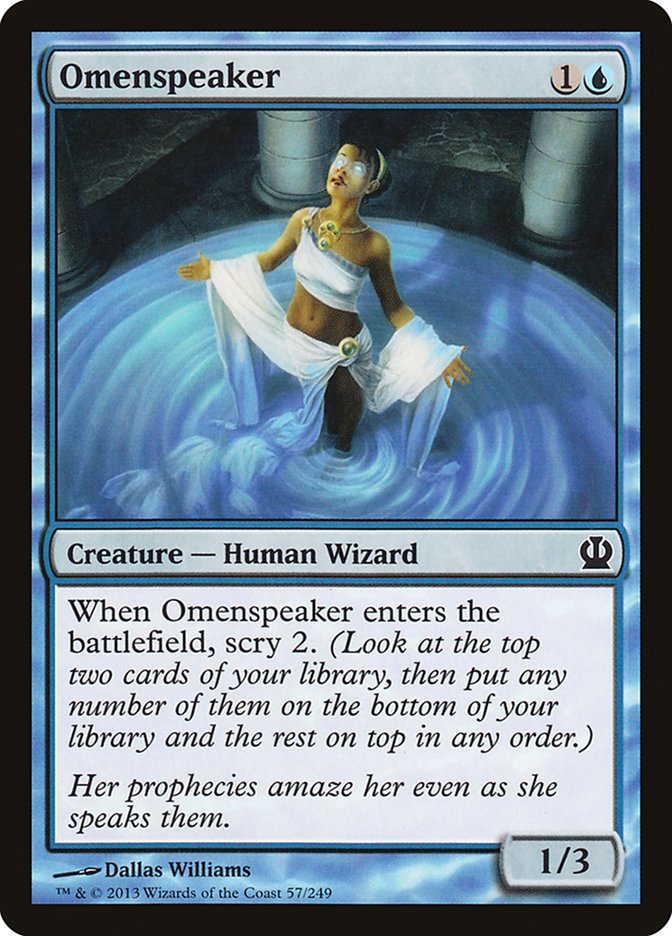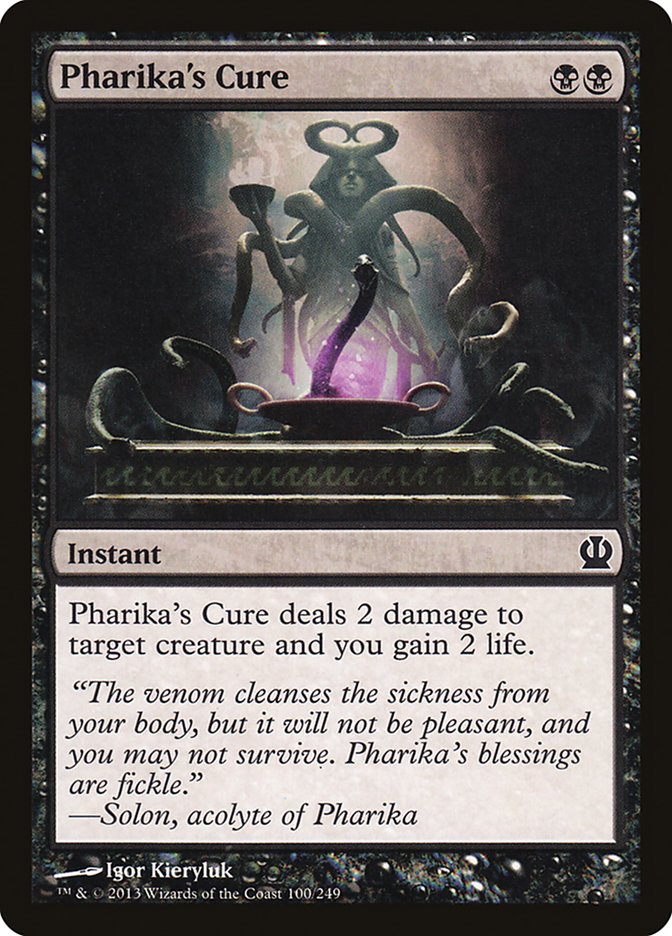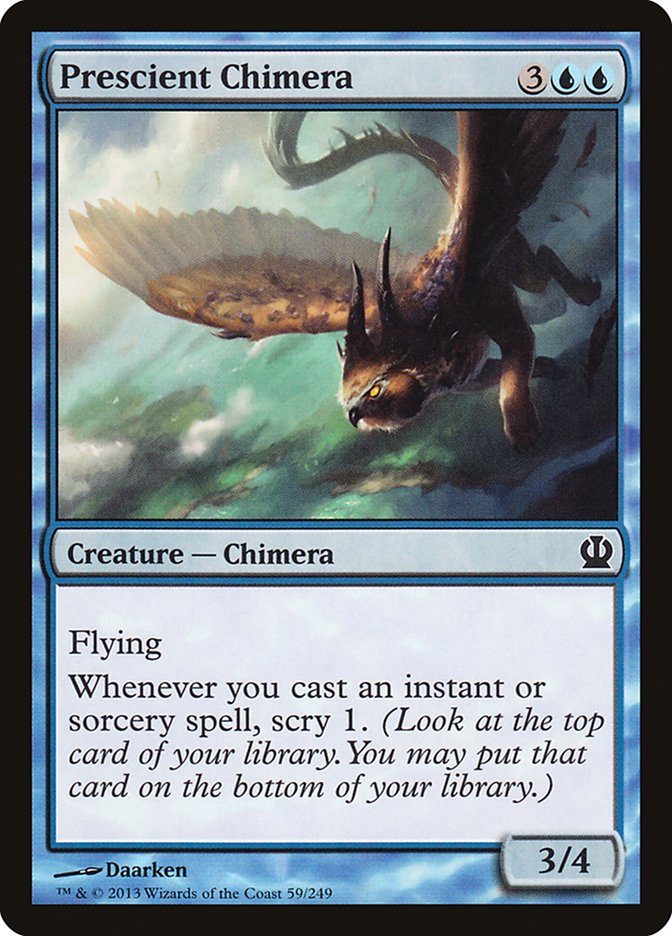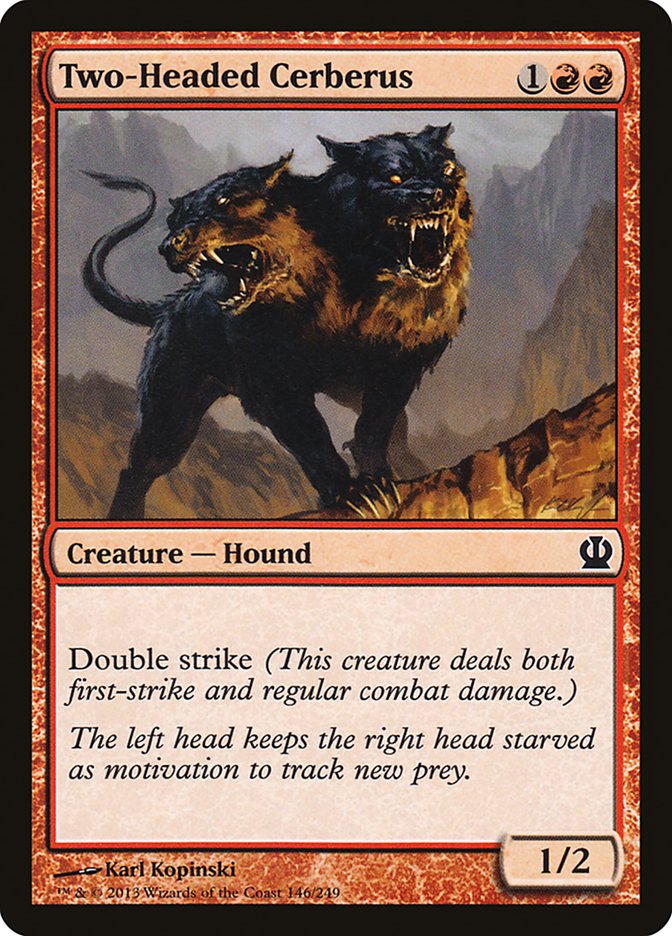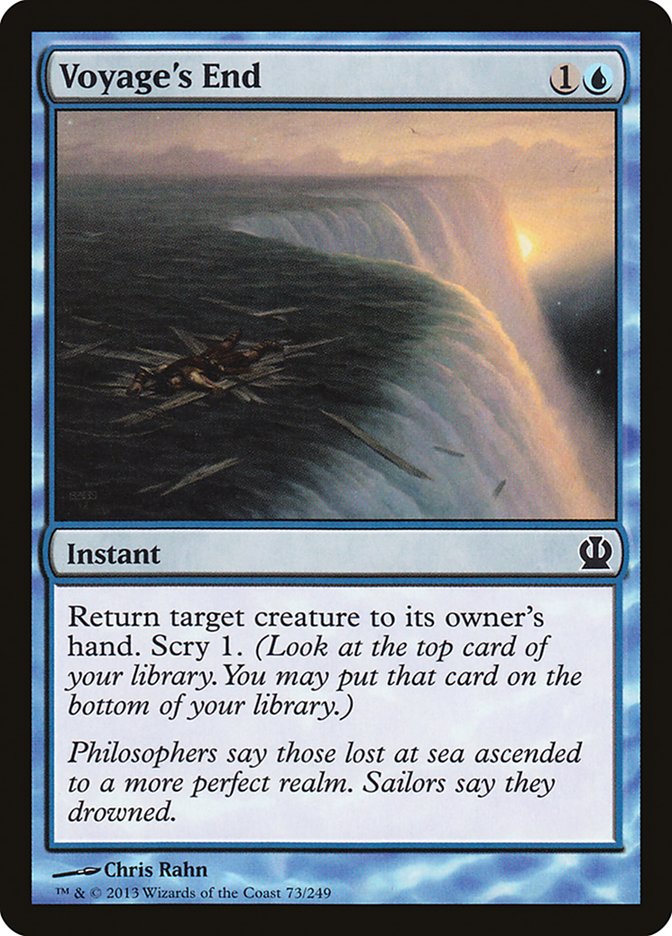Theros is here, and the gods walk among us. In Pauper, these deities are going to be introduced to a vastly different landscape than the horrors of Innistrad or the guilds of Ravnica the second time around.
The banning of Cloudpost and Temporal Fissure will impact the Pauper metagame in ways I cannot fully predict. For the first time in a long time, there is not an obvious broken combo deck and no clearly insane mana engine. It appears that in the days following October 2nd (when the bans go into effect), the format is going to lack a dominant combo deck and a go-to control deck. I do not expect this to be the case for long, but aggro decks should fare well for the first few events.
The other big change is that decks that develop on the table are viable again. Temporal Fissure prevented any deck that put permanents on the table (that did not present a winning threat by turn 4) from flourishing. Decks like White Weenie were hated out of the metagame, and the Guildgates never really had a chance. Now having a card that enters the battlefield tapped or requires permanents to stick around no longer signals "I’m here to lose to Fissure."
This is a huge shift in mentality. The non-Cloudpost decks that have been at the top of the metagame—Stompy, Delver, Affinity, and Nivix Cyclops decks—fall into two camps. The first is occupied by Delver and is summed up as decks with countermagic. The other three are all decks that can develop a game-winning hand and board by turn 4. Going longer than that meant that Temporal Fissure could just do its thing and undo all the investment. I will be examining the broad changes to Pauper, looking back at the history of commons to find out what deserves a shot in the new world. For now, I have got Greek on my mind.
Theros is going to enter Pauper at the perfect moment. Heroic, monstrosity, bestow, and devotion are all mechanics that requires players to keep their permanents on the battlefield. This combined with the jostle to the metagame means that more cards than normal warrant examination. Shall we begin?
Akroan Crusader starts us off with a bang. The ability to generate multiple threats from one card is powerful—just look at Lys Alana Huntmaster in Elves. Currently, Akroan Crusader can find a home in the sideboard or maybe even the maindeck of the Nivix Cyclops / Kiln Fiend deck known as Eye Candy. This deck packs a number of spells that target its own creatures (such as Distortion Strike and Reckless Charge), so Akroan Crusader plays very nice in the Izzet sandbox. This has the potential to be more important if Diabolic Edict effects become heavily played to counter Eye Candy.
The red one-drop also has the potential to enable a wider variety of decks. While I was working on G/W Hexproof, I started to think of other palette swaps. Akroan Crusader got me thinking about green’s bread and butter: pump spells.
Creatures (24)
- 4 Mogg Fanatic
- 4 Silhana Ledgewalker
- 4 Keldon Marauders
- 4 Slippery Bogle
- 4 Gladecover Scout
- 4 Akroan Crusader
Lands (20)
Spells (16)

This is a starting point for a Gruul-flavored Crusader list. Hunger of the Howlpack is strong enough to consider as a four-of, but without playing the list, it is hard to determine the correct number. This deck is designed to hit hard while backing up early beats with a difficult-to-remove creature. Colossal Might is quite the solid ratio of damage to cost and could see more play if two-color decks are able to exist.
Another direction Akroan Crusader pushes towards is batallion. Combining the Crusader with cards like Martial Glory and Wojek Halberdiers gives the Boros mage the ability to flood the kill zone and swing for quite a bit of damage. It is not out of the realm of thought to consider Ethereal Armor, Madcap Skills, and Furor of the Bitten for such a deck either. The deeper one gets into Auras, the more appealing Scourge of the Noblis becomes. In Boros, Akroan Crusader provides a bevy of options, and I fully expect to see different takes with this crimson dynamo in the future.
Aqueous Form is almost Curiosity. Almost. Scrying for one is worth somewhere between a quarter and a third of a card, so anything wearing these wet pants will need to attack three or four times to recoup the cost of the card. Being able to slip past defenses is also valuable, but most of the decks looking to deal damage want a card that increases the damage output of enchanted creatures, which Aqueous Form does not do. If Simic ever gets on the Hexproof train, I could see this coming out of the sideboard, but for now—almost.
Blood-Toll Harpy is a card to keep in mind for the future. The ability to hit for life loss gets around nasty cards like Prismatic Strands and Circle of Protection: Black. The casting cost is also perfect for decks leaning on Unearth. Currently a card without a home, the Harpy will have to remain perched on the sidelines for now.
Anyone who played against me when I was a little kid knows I gravitated towards black aggro decks. Boon of Erebos speaks to that recess of my mind where my LK still lives. Black’s creatures are rather fragile, but Boon addresses this by providing regeneration. Boon provides that final punch that black aggro decks need to close out games. Once Theros comes to Magic Online, one of the first decks I will be working on will look something like this:
Creatures (28)
- 4 Carnophage
- 4 Dauthi Slayer
- 4 Dauthi Horror
- 4 Vampire Lacerator
- 4 Fume Spitter
- 4 Vault Skirge
- 4 Rakdos Shred-Freak
Lands (18)
- 18 Swamp
Spells (14)

Clearly a starting point. This deck probably wants some number of Bonesplitters for more permanent power boosts. It is possible that decks of this ilk would want Dark Ritual or Peat Bog for mana bursts. Perhaps Duress and Raven’s Crime could find a home as a disruption package. I am not certain Suicide Black will be viable post-Theros, but I know I will be giving it the ol’ college try.
Let me tell you how excited I am to try Boulderfall in my Cloudpost decks—oh wait, nevermind.
In all seriousness, Boulderfall provides something that no other common can do, and it comes with a steep price. If a ramp deck emerges that can play red, I fully believe Boulderfall will vie for a spot. The creatures in Pauper mostly have low toughness, so it is not outside the realm of possibility for this to take out three or four creatures. The price is steep and undercut by Electrickery, but Boulderfall has the added bonus of being able to go to the dome. That being said, eight is way more than enough.
Many players are high on Commune with the Gods as an enabler in Tortured Existence decks. Commune would allow the grindy deck to dump a large number of creatures into the graveyard while finding its namesake enchantment. While the current popular version of the deck is of a Rakdos variety, Commune with the Gods could bring back the Golgari build of the deck. It will be interesting to see if this deck, which is quite the clock eater, will be fast enough for the upcoming metagame.
Deathbellow Raider is nothing special—just an Erg Raiders. The regeneration cost is high enough that it will rarely matter (and doubly so in mono-red). In a format full of 2/2s, it can attack with impunity and provides a nice complement to Gore-House Chainwalker. The Raider matches up very well with the early drops of other aggro decks: Nettle Sentinel, Loyal Cathar, Goblin Cohort, and others. The three toughness does not look like it should matter with Lightning Bolt as an option, but combat matters. If a non-Goblins red aggro deck rises up, Deathbellow Minotaur should answer the call.
When looking at the spoiler for the first time, I was not impressed by Disciple of Phenax. Then my hand got wrecked by one at the Prerelease. Devotion is right at home in black with the color’s history of heavy color commitments. Following up a Chittering Rats or Liliana’s Specter with a Disciple of Phenax means there is a good shot of being able to see an opponent’s whole hand. The worst part of this card is the casting cost—at four, it cannot be retrieved with Unearth. If a black-based Exhume Reanimator deck exists, Disciple could see play there, but in the meantime I see it more as a utility creature in the sideboard of Tortured Existence decks, where the high casting cost is not a liability.
Feral Invocation looks like it would play nice in G/W Hexproof—having flash makes it an ideal combat trick. The deck is already tight on slots (and looks to get tighter with this set), so at best it becomes a combat trick—except G/W Hexproof wins most brawls, making Feral Invocation a typical "win more" card. If G/W Hexproof is your jam, then by all means pick this up, but Ancestral Mask is probably better (although much harder to find online).
Back in the days of Player Run Pauper, the deck to beat in Ravnica/Kamigawa Standard Pauper was a midrange Orzhov deck. With creatures like Blind Hunter, Shrieking Grotesque, and Guardian of the Guildpact, this deck eked out value over the game and usually won on the back of a Pillory of the Sleepless. I came prepared with a version of the deck that packed Rend Flesh and Blessed Breath (and Soulless Revival) to counter removal while not going down a card. I bring this up because Gods Willing reminds me of Blessed Breath in that deck. Gaining protection is a potent ability, and it just gets stronger when it does not cost a full card. Right now I do not see blocking being a huge thing in the coming days of Pauper, but if it ever does matter, Gods Willing will be a card to pick up.
Gray Merchant of Asphodel is much like Disciple of Phenax in its reliance on devotion. Unlike Disicple, it can do good work without needing to be cheated into play. Black decks of years gone by have run Corrupt as a game ender. The Merchant can play a similar role but has the added feature of being retrievable by Grim Harvest. If slower black control decks make their presence known (and I suspect they will), the GMoA will get a shot.
Hopeful Eidolon and Leafcrown Dryad are both interesting options for G/W Hexproof. They are both serviceable creatures that boost Ancestral Mask, Aura Gnarlid, and Ethereal Armor. The Spirit and the Nymph also have low enough bestow costs that they could see play in a land-light deck like G/W Hexproof. If the deck persists past the bans, both of these will get a chance in the limelight. Hopeful Eidolon has the bonus of stacking with Armadillo Cloak, as the latter does not have true lifelink.
Once Cloudpost leaves the format, the best option for ramp decks likely revolves around Wall of Roots and Overgrown Battlement. As an advocate of Sentinel Spider, it should come as little surprise that I also support Nessian Asp in green wall ramp. A 4/5 creature beats just about everything in combat, and very little stands in the way of an 8/9. I am not sure if Ulamog’s Crusher will fall out of favor with such decks due to the inability to randomly drop one on a Cloudpost fueled turn 4, but in a format where Insectile Aberration and Somber Hoverguard are attacking, Nessian Asp can do tons of blocking.
Nylea’s Presence provides an additional Abundant Growth for G/W Hexproof. While it does cost more, it still draws a card. The ability to produce any color in a largely green deck while also replacing itself makes this an attractive option for green-based two-color decks moving forward.
Sea Gate Oracle has seen lots of play and puts a card into the hand of the caster. Omenspeaker comes down a turn earlier but does not net replace itself. The Oracle does not guarantee either of the top cards are ones that are needed. Omenspeaker can get rid of the dead cards. Sea Gate Oracle can draw a needed piece, while Omenspeaker just leaves it on the top. If the format skews aggressive, I think Omenspeaker will prove more valuable since it comes down a turn earlier, but I do not think it wholly replaces Sea Gate Oracle.
Pharika’s Cure is for those times when four Sorin’s Thirsts are not enough, meaning that I fully expect someone to play four Sorin’s Thirsts before playing any Pharika’s Cures.
A long time ago in the days of Player Run Pauper, I ran Inkfathom Divers as a sideboard option for the mono-blue mirror. A 3/3 Islandwalk creature proved to be almost good enough when fighting against Islands. Prescient Chimera reminds me of this card—except it is miles better, with a body large enough to block any flying creature (and most ground pounders) in Pauper. The ability to scry on an instant or sorcery is quite powerful since it soups up every Think Twice and Counterspell. Blue control will likely make a return (although Delver will remain a player), and Prescient Chimera looks to play a huge role in improving the quality of cards drawn for blue players.
As if they needed it.
Read the Bones is not Sign in Blood. It is not Foresee. The new black card-drawing spell falls somewhere in between the two and reminds me of Compulsive Research. Read the Bones will not replace Sign in Blood in mono-black decks, as the three slot in Rats and MBC are both heavily clogged. What Read the Bones does do is makes nonblue control decks viable. Compulsive Research was a key card in Izzet Post and Fissure Post decks and lets the caster see three cards, netting two live cards. Read the Bones only nets one but gives the caster the ability to see up to four cards. Two dead on the top? Dig deeper. This is something that has not been seen on nonblue cards in Pauper ever. Read the Bones opens up deckbuilding options, letting non-Island decks draw cards as well. Expect to see this one pop up immediately—it is that good.
I want Scourgemark to be the card that puts Golgari Hexproof on the map. Scourgemark will not be this card.
Titan’s Strength and Two-Headed Cerberus play nicely together. The double down dog is the first common creature with natural double strike. Titan’s Strength is the best part of Giant Growth on offense with scry, which is awesome. These cards help nudge red towards a non-Goblins attacking deck similar to the lists with Furor of the Bitten I was advocating a few months back. Theros Red Deck Wins might look something like this:
Creatures (27)
- 4 Inner-Flame Acolyte
- 4 Vault Skirge
- 4 Skinbrand Goblin
- 3 Rubblebelt Maaka
- 4 Akroan Crusader
- 4 Two-Headed Cerberus
- 4 Deathbellow Raider
Lands (20)
- 20 Mountain
Spells (13)

This deck sure loves attacking. Being able to load up a Vault Skirge or Two-Headed Cerberus is nice, and Akroan Crusader provides another one-drop that likes being targeted. The creatures with bloodrush might not play nicely with heroic, yet they still do the job when it comes to damage output. This is likely to be the first red deck I battle with when Theros comes to Magic Online.
Voyage’s End is just another bounce spell but is as close to Repulse as we can get for two mana. As I mentioned in the opening, I believe Pauper is going to be moving towards a format where people will be able to have permanents on their board. Because of this, I also expect cheap bounce (like Unsummon, Vapor Snag, and Silent Departure) to see more play. Voyage’s End provides the filtering effect of scry, making this option appealing despite the expense.
Theros is a very well-designed set and provides plenty of options for Pauper. As I said before, the timing of the release is serendipitous with the upcoming removal of oppressive cards. My Theros pickup list is:
4 Akroan Crusader
4 Boon of Erebos
4 Commune with the Gods
4 Deathbellow Raider
2 Disciple of Phenax
3 Gray Merchant of Asphodel
4 Hopeful Eidolon
4 Leafcrown Dryad
4 Omenspeaker
4 Prescient Chimera
4 Read the Bones
4 Titan’s Strength
4 Two-Headed Cerberus
4 Voyage’s End
This is a longer list than normal. Be honest—it doesn’t matter. You were going to draft these all anyway.
Keep slingin’ commons-
-Alex
SpikeBoyM on Magic Online
https://www.facebook.com/nerdtothecore
The Colors of Pauper: W U B R G
Discuss Pauper on Twitter using #MTGPauper

